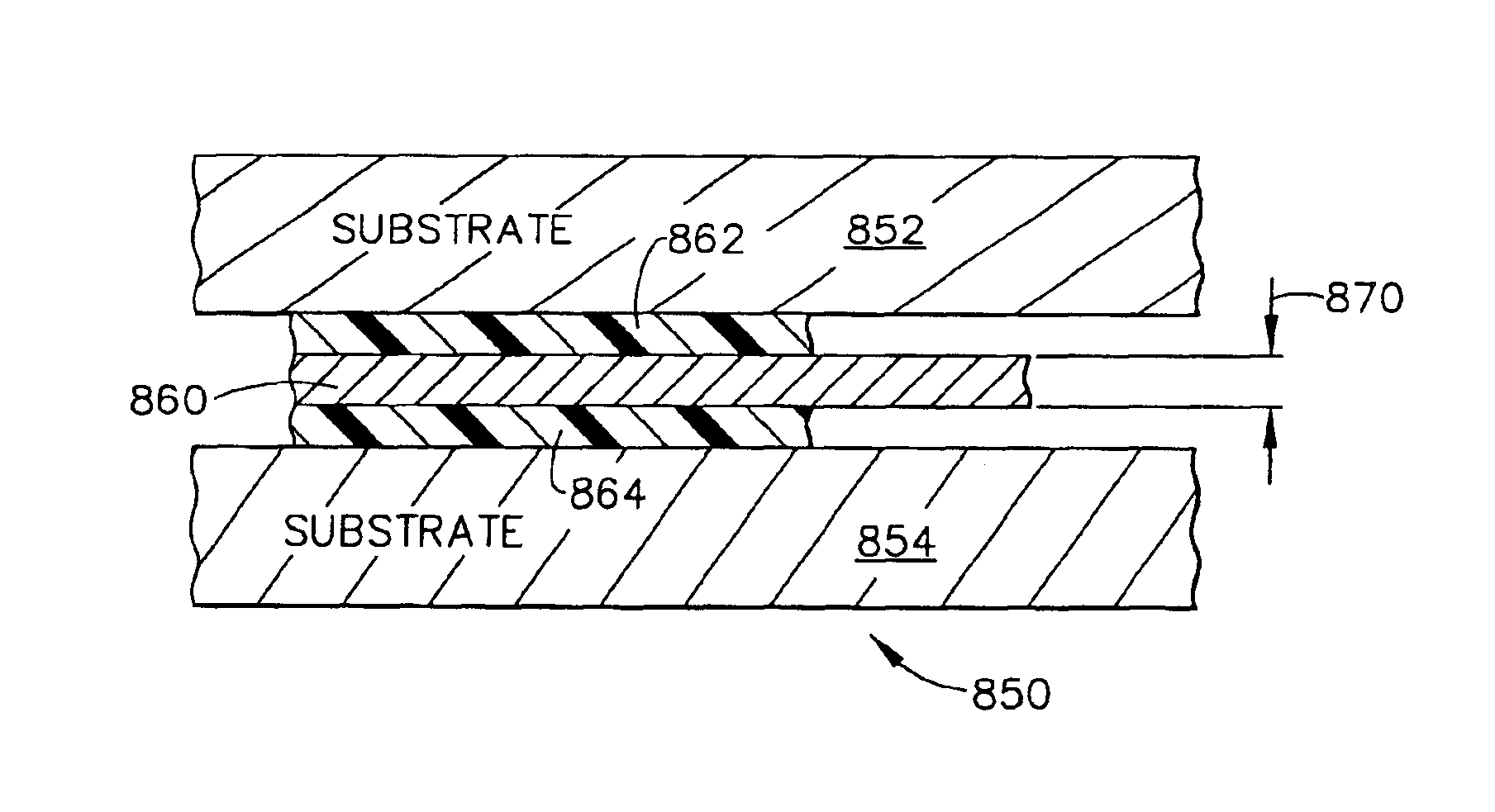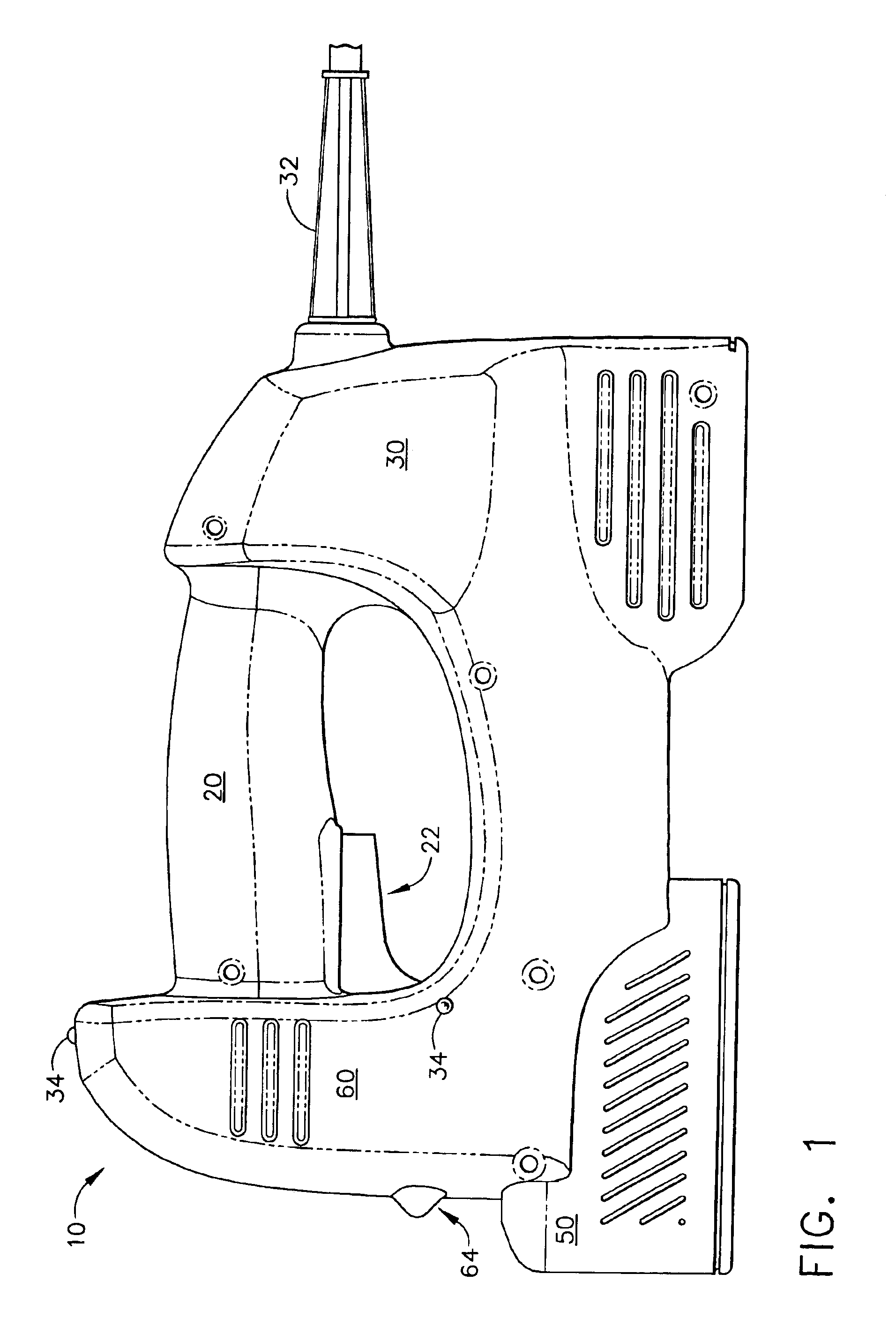Method of adhesive bonding by induction heating
a technology of induction heating and adhesive bonding, which is applied in the direction of electric heating, electric/magnetic/electromagnetic heating, manufacturing tools, etc., can solve the problems of labor cost, assembly time, labor cost, etc., and achieve the effect of melting more quickly
- Summary
- Abstract
- Description
- Claims
- Application Information
AI Technical Summary
Benefits of technology
Problems solved by technology
Method used
Image
Examples
first embodiment
FIG. 8A is a block diagram 300 of the major electrical components of the first embodiment induction heating tool 10 of the present invention. Starting with a power source of 117 VAC (also sometimes referred to herein as a 120 VAC alternating current source) at 302, the line power is connected to a fuse at 304, then an ON-OFF switch at 306, and a thermistor at 308. This line voltage then drives into a transformer 316 and also into a 160 VDC power supply 314.
The heating induction tool 10 of the present invention can also be battery operated, and in that circumstance there would be no 117 VAC (or 120 VAC) source. Instead, a battery 310 is utilized, which provides direct current into an inverter stage at 312 (see FIG. 7, for example). This becomes the power source for the 160 VDC power supply 314. Either the battery 310 or the transformer 316 provides power for a +5 VDC power supply 318. This +5 volt supply provides power to a microprocessor stage 350.
The output of the 160 VDC power sup...
second embodiment
Referring now to FIG. 8B, a block diagram 301 is provided illustrating some of the major electrical components of the second embodiment hand held induction heating tool 10. An AC power source, such as 120 VAC line voltage, is provided to supply power to a rectifier and filter stage at 370. A DC-DC pre-regulator 372 receives direct current from the output of the rectifier / filter stage 370, and a DC-AC inverter 374 receives a controlled voltage level from the pre-regulator 372. The output of the inverter 374 is used to drive an induction head 376, which is essentially the same as the head sub-assembly 50 depicted on FIGS. 1 and 2.
The induction head 376 generates a magnetic field via a work coil (not shown on FIG. 8B, but which is part of the induction head), and this magnetic field is directed toward an aluminum susceptor 390 which includes at least one relatively thin “foil” layer of electrically conductive aluminum (but which could easily use a different material for its electricall...
PUM
| Property | Measurement | Unit |
|---|---|---|
| thickness | aaaaa | aaaaa |
| thickness | aaaaa | aaaaa |
| thickness | aaaaa | aaaaa |
Abstract
Description
Claims
Application Information
 Login to View More
Login to View More - R&D
- Intellectual Property
- Life Sciences
- Materials
- Tech Scout
- Unparalleled Data Quality
- Higher Quality Content
- 60% Fewer Hallucinations
Browse by: Latest US Patents, China's latest patents, Technical Efficacy Thesaurus, Application Domain, Technology Topic, Popular Technical Reports.
© 2025 PatSnap. All rights reserved.Legal|Privacy policy|Modern Slavery Act Transparency Statement|Sitemap|About US| Contact US: help@patsnap.com



